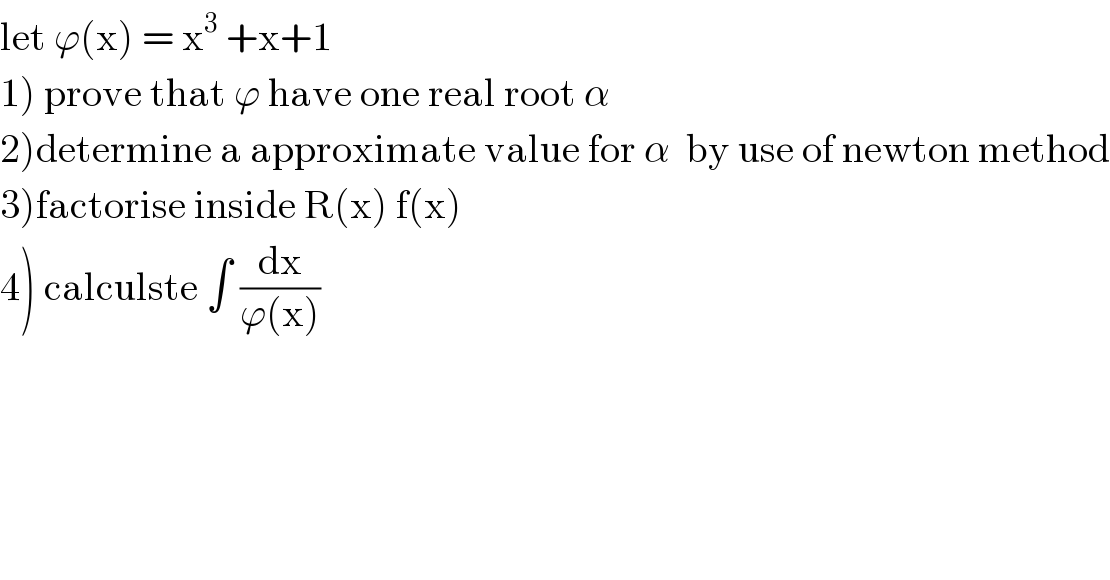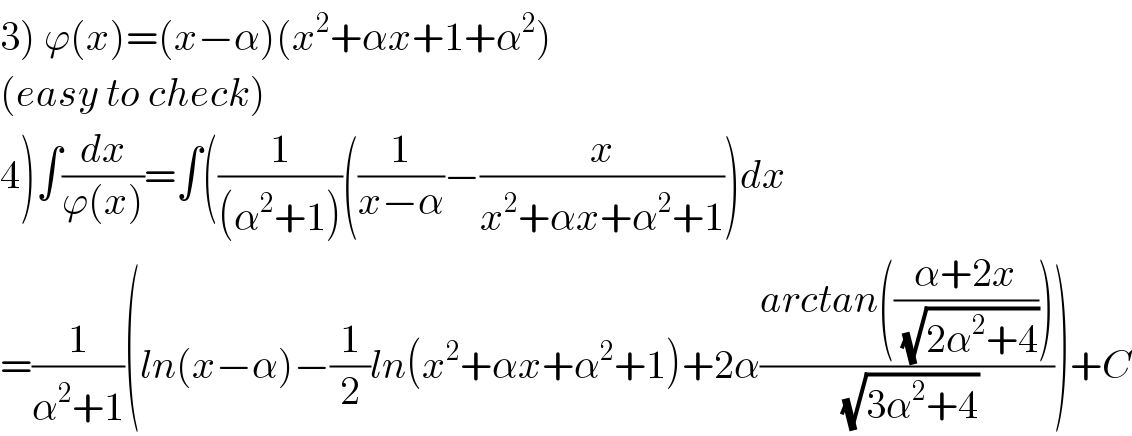Question Number 104772 by mathmax by abdo last updated on 23/Jul/20

Answered by MAB last updated on 23/Jul/20
![1) ϕ′(x)=3x^2 +1>0 lim_(x→−∞) ϕ(x)=−∞ lim_(x→+∞) ϕ(x)=+∞ hence ϕ is a bijection of ]−∞,+∞[ to itself, ϕ has a unique real root 2)x_(n+1) =x_n −((ϕ(x_n ))/(ϕ′(x_n ))) x_(n+1) =x_n −((x_n ^3 +x_n +1)/(3x_n ^2 +1)) x_(n+1) =((2x_n ^3 −1)/(3x_n ^2 −1)) let x_0 =0 using python x_5 =−0.6823278039465127 to be continued...](https://www.tinkutara.com/question/Q104778.png)
Commented by abdomsup last updated on 23/Jul/20

Commented by MAB last updated on 23/Jul/20

Answered by MAB last updated on 23/Jul/20

